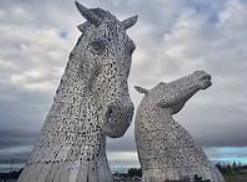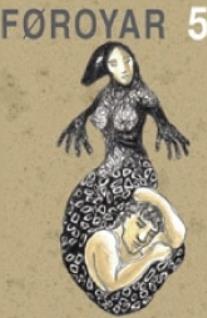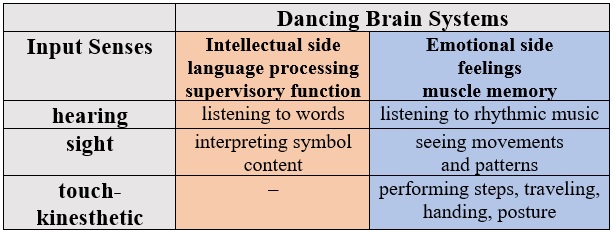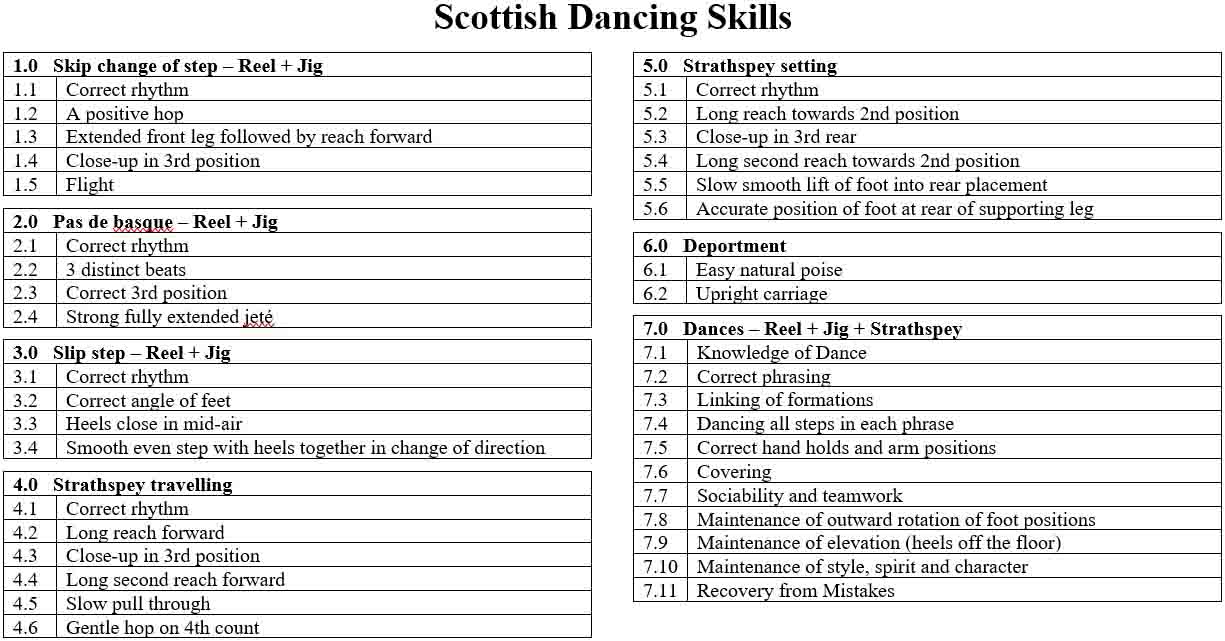
| Volume 36 #5 | March/April 2020 | |
 |
This is a wonderful time of year, warming up a little but not too much, raining a little but not too much, still dark enough in the evenings to encourage us to go dancing instead of working in the garden or mowing the lawn.
With our weekly dance classes (both here in Vancouver and across the river in Portland) as spring boards, we all can look forward confidently to Portland's Forty-First Workshop and Ball coming up March 14th, and next month to our own April Dinner Dance on April 25th -- our 35th annual Dinner Dance. (Remember, the Dinner Dance reservations must be in by April 15th!)
I'm so grateful for all the wonderful (and hardworking) teachers we have in this area, for their class preparation, for helping students (new and experienced) improve their dancing and increase their enjoyment from and appreciation of the music and Scottish Country Dancing. I appreciate that we are blessed with so many fine musicians in our area, that make our dances so enjoyable. And it's a lot of fun, too, working with fellow dancers to put on our dance events -- many hands make light, and fun, work!
Happy Dancing!
Step Transitions and a Bit About Dancing Together
In many dances, dancers must shift between one or more of the five fundamental steps. For example, in almost every jig or reel, dancers change from skip change of step to pas de basque and back, and in most strathspeys, dancers change between strathspey travelling and setting. How to execute the transitions between the steps varies, depending on how the dance is constructed, and in some cases, on the figures in the dances.
For example, when dancing a strathspey Poussette Right Round, two dancers will start with the left foot instead of the right. And unless the dance begins with the poussette, the left foot starting dancers will need to do a step transition in order to begin on the proper foot. Likewise, at the end of the poussette, if the same couples are continue dancing the next phrase with a travelling step, there is a need for the left foot starting dancers to somehow get back on to the proper foot for the next phrase.
Another common step transition arises in quick time when a dancer must change from a slip step to the right into skip change. Two examples: dancing a circle and back into any formation that uses skip change, or dancing slip down the middle and up followed by a cast off from the woman's side.
The RSCDS has provided good guidance on how to execute the various step transitions. However, that guidance has changed from time to time. As a result, the types of transitions that your teacher or you originally learned as being "proper" may or may not reflect the current guidance from Headquarters. But it is good to keep in mind, we are dancing for fun and we should not get pedantic about foot transitions.
Importantly and wisely, the current RSCDS dancing manual states that "There is no single correct or 'approved' way to dance any transition or change of foot, but any transition should be elegant and as unobtrusive as possible. The context of the dance may indicate different methods of transition, depending on the movements to be linked."
All that said, the manual makes the following suggestions for the author selected step transitions. I am including these as some dancers learn well from written text and most dancers don't own the RSCDS dancing manual.
1. From pas de basque to slip step (to the left) - "This may be achieved by a coupe displacing the supporting left foot by bringing the right foot from fourth intermediate aerial position to become the supporting foot. There are several other methods which maintain the rhythm of the steps."
2. From slip step to pas de basque - "Where slipping to the right is followed by pas de basque onto the right foot, it is possible to finish all the slip steps and spring onto the right foot to begin pas de basque. The more common practice is, in the last bar, instead of dancing two slip steps, step to the right in second position then close the left foot to first position, releasing the right foot."
3. From skip change of step to slip step - "If skip change of step travelling to the left, or clockwise, is followed by slip step to the left, the last skip change of step may be 'blended' into slip step by becoming hop, step close, step close, closing in first rather than in third position."
4. From slip step to skip change of step - "If slip step to the right is followed by skip change of step, for example four slip steps and two skip change of step, this may also be done by 'blending'. Instead of dancing four slip steps, dance six slip steps, then hop on the right foot to start the second skip change of step on the left foot. This avoids breaking the rhythm which occurs if three slip steps and a 'close' are danced followed by a hop on the left foot to start skip change of step."
5. From strathspey setting to travelling - "After setting to the right and to the left, instead of bringing the right foot to third rear aerial low, bring the right foot towards the left foot and, while hopping on the left foot, bring the right foot through smoothly to fourth position to begin the travelling step. If setting then casting off to the right, the second setting step should be finished in the normal way." (Emphasis added by author; the normal way means finishing the setting step with the right foot up in third aerial low, toe just above the supporting heel).
6. From strathspey travelling to setting - "After travelling with the right foot and then the left foot, finish the last traveling step with the right foot in third rear aerial low position before beginning to set."
The need for a step transition may only be necessary on the men's side or on the women's side in a particular dance. This adds an interesting additional challenge to management of the foot transition. If a couple is executing a figure together but only one of the dancers has a step transition there are two things to consider. First, how to do the transition and second, how to do it such a way as to still be dancing with their partner.
For example, consider when in quick time a couple slip down the middle for two bars, set, slip up for two bars, and cast off one place. In this situation, the woman has a step transition from slip to skip change but the man does not. The dancers, if they are focusing on dancing together, can try to be aware of each other's situation and so the man may perhaps time (slow) the movement of his cast away to accommodate the possible little pause the woman will take as she makes the step transition before the cast.
If this particular concept of dancing together is less than clear, here's a general example to consider. Think about when in quick time a first couple sets and casts off - a very common dance sequence. The woman has it easier than the man in this situation. Her right foot is extended from the jeté and is generally pointing towards the top of the set and thereby the direction she will move when she starts to cast. However, the man's right foot is extended down the set from his jeté while his next casting movement will be up the set. Often this means casting from the man's side takes a tiny bit longer to accomplish than from the woman's side. An observant dancing couple, who are focused on dancing together, will catch each other's eye and attempt to coordinate the timing of their casts. Coordinated dancing in this instance may be accomplished in at least two ways - for example, by both starting to turn upwards at the end of the setting so as to be ready to cast - or by the woman slowing down the start of her cast to match the man and give him time to get his right foot heading up instead of down.
Hope this article didn't bore with all its technicalities but perhaps it will provide food for thought, particularly for more experienced dancers. If you have any questions about step transitions, please ask your teachers.
Happy dancing!
Here's a funny and charming video that San Diego Branch teacher Jeanne Moody's beginner class put together. Jeanne joked with them about practicing the change of weight while in the kitchen or brushing their teeth. They did a compilation of just that, and more!
Our Annual Dinner Dance is coming up on April 25th, and the theme this year is Scottish Legends.
And there are a lot of Scottish legends! Here are just a couple that I found.
Among old Scottish legends are tales of shape-shifting water creatures. Two prominent myths are Kelpies and Selkies. Do you know the difference?
Kelpie
 |
Selkie
 |
The folk-tales frequently revolve around female selkies being coerced into relationships with humans by someone stealing and hiding their sealskin. A typical folk-tale is that of a man who steals a female selkie's skin and compels her to become his wife. But the wife will spend her time in captivity longing for the sea, her true home, and will often be seen gazing longingly at the ocean. She may bear several children by her human husband, but once she discovers her skin, she will immediately return to the sea and abandon the children she loved, never to be seen again by them.
The shape-shifting nature of selkies within Shetland
tradition is detailed in the Scottish ballad The Great
Silkie of Sule Skerry:
I am a man upo' da land;
I am a selkie i' da sea.
An' whin I'm far fa every strand,
My dwelling is in Shöol Skerry
[First published in the Montreal Star, May 3, 1976. This excerpt is taken from The Montreal Branch's Newsletter, The Scottish Dancer, June 1976. Thanks to Marge Van Nus for sharing it. ~ed]
Continuing hunts for the loch Ness monster in Scotland have aroused a competitive spirit in New Zealand on behalf of the local neighbourhood monsters. Maori legends abound in reference to an awesome water creature known as the taniwha. It seems to have been equally at home in fresh or sea water, since it lurked in the depths of caves, river beds, forest pools, and along the sea coast. Its haunts were best avoided, for it rughlessly killed and ate human beings who fell into its clutches. Maori mythology tells of heroes who fought and killd the dreaded taniwha, but such victors were nearer gods than men.
In fact, no remains in any way resembling a taniwha have ever been found. Nevertheless, the legends are so vivid that the idea of taniwhas is very much alive. Maori parents still threaten naughty children with warnings that a taniwha will get them unless they behave.
A movement to safeguard the taniwha from the inroads of the modern world has developed. Led by enthusiasts of the Friends of the Taniwha Society, taniwha lovers have rallied to their defence. The say that eggs of taniwha were incubated and released in Western Springs Lake in Auckland to perform a useful function in keeping under control the spread of the water weed. It has been suggested further that efforts should be made to cross-breed them with Loch Ness monsters by importing fry (if that is the correct biological term) of the Scottish creature.
A few years ago, I went to a Saturday SCD workshop with some friends. After a short rest and dinner, we went to the Ball that night... and there I had an AHA moment! The day and the evening were so much fun, yet it is that sudden revelation that I remember most.
During the workshop, the teacher paid particular attention to our steps, and I remember him encouraging each of us to learn to pay attention to our own steps, to observe and critique ourselves, so we could continue to progress beyond the workshop.
He also challenged us to pay particular attention to the music. I thought, oh yes, of course, the music, because we need to dance on the beat. And I predicted (in my experienced cleverness) that he was about to try to catch us dancing a reel-time pas de basque to jig time music. I was prepared.
Instead, the instructor asked us to dance to some strathspey music. We did -- and he took the opportunity to critique our steps. And you know the strathspey step mantra: REACH, close, Step, and-through; REACH, close, Step, and-through. That first REACH, also called a surge, is where the dancer thrusts forward on the supporting leg; and, it is the strongest movement of the four beats of the step.
Then he put on some other strathspey music, and had us dance some more. Did we hear or feel any difference, he asked. I did not really see or feel much difference. He pointed out that the first tune he used was a "traditional" strathspey, something like the The Braes of Breadalbane. In the traditional style, the music has a very notable rhythmic emphasis: STRONG, weak, Medium, weak; STRONG, weak, Medium, weak.
The second tune we danced to was in the form of an air, like The Birks of Invermay. I recall it was very pretty and lyrical, but unlike the traditional strathspey, the beats all had equal emphasis. But, I wondered, why is that significant? The teacher then stressed the importance of the "REACH, close, Step, and-through" approach to the character of the strathspey step -- that without that REACH, or surge, the strathspey loses its elegance, and its power. The traditional tune urges us to "REACH, close, Step, and-through". The strathspey air, on the other hand, with its four beats of equal emphasis, does not cajole our steps into conformity with the strathspey norm. The instructor concluded: When we find ourselves dancing to an air, we need to be aware that the music won't have that urgency, and it is up to us to supply the missing emphasis in our steps.
That night at the Ball, the Program included one of my favorite dances, a strathspey by John Drewry, Autumn in Appin. As the sets were forming, the dancers in our set acknowledged having seen each other earlier in the workshop. As the dance began, we all heard the beautiful lead tune, and recognized it as an air!. We all smiled at the shared recognition, and also at the remembered admonition -- to actively supply the needed emphasis in our steps.
The result was electric. We danced as we had never danced before. And when we were done, we were on fire!. The joy and satisfaction of dancing that beautiful dance to that beautiful air, was amplified by the extra effort we made to maintain the steps. Who knew? The reward we get from of an activity is proportional to the effort we put into it.
Lisa Scott's Low Impact dance class is intended to be a gentler, low impact class for dancers, and emphasizes the social aspects of dancing. The class meets 2nd and 4th Tuesdays, 7:30 to 9:00pm, at Columbia Dance Center. Lisa combines her extensive musical background with teaching the dances, for a lively dancing experience.
Each dancer has the option to dance formations with full energy or low impact. Dancers practice strategies to get to the right place at the right time. But there's more to this dance class format that began January 2016! Lisa leads classes for dancers to actively move to the music, and this has been working well. I record pedometer steps and calculate steps per minute for every dance class I attend. I compared Low Impact, Challenge, and Fab Friday Fun classes this year since September 2019, and I observed that Low Impact has the highest average steps per minute. With this additional factor, Lisa's preferred dance class title is: Movin' and Groovin'.
Geoffrey and Cecily Selling's book A Handbook for Scottish Country Dance Teachers - Fourth Edition includes a chapter titled Learning to Dance. "Not every person learns the same way. People learn through various modalities. They learn through seeing, hearing, moving and touching. The primary way all of us learn dance is by watching then moving. Research has shown that most of us absorb about 85% of our information through our eyes. Demonstration should be your primary tool in teaching any element of Scottish country dancing. However, dance is a type of movement and must be learned by moving." The chapter discusses variables in learning: Preferred modality, Patterns and repetition, Readiness to learn, Stress levels, Memory, Attention, Language, Motor skills, Organization of time and space, Social aspects of learning.
 |
I am interested to connect the dancing learning process to how the brain (and nervous system) operates as two independent systems: the intellectual side (neocortex) and the emotional side (limbic). The intellectual side processes language and performs logical reasoning, and performs a supervisory function. The emotional side communicates with feelings that are automatic, and does not understand language. Both sides must collaborate to perform the dancing skill.
The intellectual side is able to perform only one task at a time. The multitasking concept is a myth, requiring a person to suspend one task in order to perform another task. For example, having a conversation while reading is ineffective. The dancing skill is actually a bundle of skills that are performed concurrently. For example, we can view a list of Scottish Dancing Skills from the RSCDS Dancing Achievement Award assessment form. Since the intellectual side can only perform one task at a time, other tasks must be performed concurrently by the emotional side. Each skill is a feedback system that involves learning a feeling, the so called muscle memory. It is important to practise skills accurately to avoid forming inaccurate feeling habits which are challenging to unlearn. The operative senses which are connected to the dancing brain systems are: hearing, sight, and touch-kinesthetic. (Smell and taste senses are inoperative with the dancing brain.) The kinesthetic sense relates to a person's awareness of the position and movement of the parts of the body by means of sensory organs in the muscles and joints.
Hearing and sight are connected to both sides of the dancing brain. The intellectual side listens to words and interprets symbol content related to language. The emotional side listens to rhythmic music and sees movements and patterns. Touch-kinesthetic on the emotional side enables performing dancing skills: steps, traveling, handing, posture.
According to Selling, dancing "must be learned by moving." A teacher's demonstrating with visual and musical input utilizes a direct channel to the dancers' emotional side. Speaking with language communicates to the intellectual side's supervisory function that can only coordinate or reinforce feeling skills that the emotional side has learned.

| A Handbook for Scottish Country Dance Teachers - Fourth Edition 2012 - Geoffrey & Cecily Selling | ||||
| Simon Sinek: "The Golden Circle" | Neocortex = rational analytical language, Limbic = feelings no-language | |||
| Switch - Chip Heath & Dan Heath - 2010 | Rider = rational side, Elephant = emotional side | |||
| How to Learn Scottish Dancing in 20 Hours | Learn dancing with the entire brain: intellectual and emotional | |||
| Learning Folk Dancing | Gain the feeling of moving to music |
Calendar of Events | |||||||||||||||||||||||||||||||||||||||||||||||||||||||||||||||||||||||||||||||||||||||||||||||||||||||||||||||||||||||||||||||||||||||||||||||||||||||||||||||||||||||||||||||||||||||||||||||||||||||||||||||||||||||||||||||||||||||||||||||||||||
|
|